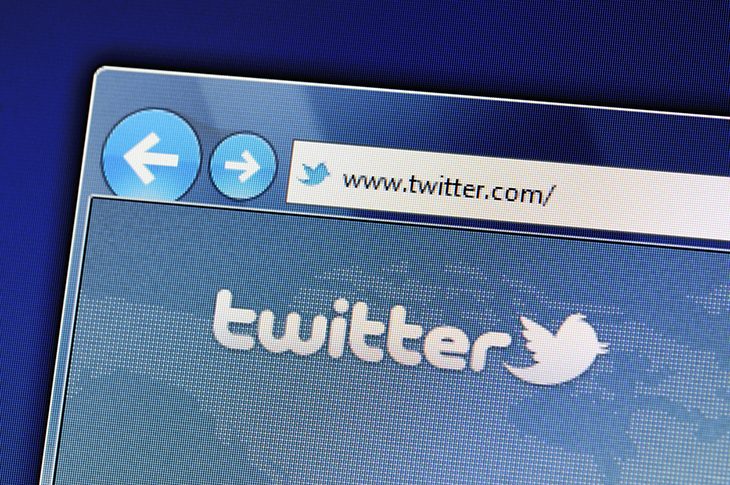Do you Tweet?
Here’s all you need to know about Twitter along with some tips for best practices.

According to recent statistics, 500 million tweets are sent each day, and almost 67 percent of U.S. companies with more than 100 employees use Twitter to market their business. That’s a huge increase from the first tweet made in 2006.
So, if you are wondering if your business should get in on the Twitter bandwagon, you are probably already trailing behind your competitors. This platform for social media marketing is no longer a fad; it’s a real marketing opportunity. And if your business isn’t tweeting, you could be missing out on a great way to connect with your customers and potential customers. Consider these widely available statistics:
- 77 percent of Twitter users feel good about a brand that replies to their tweet
- On average, Twitter users follow five businesses each
- 80 percent of Twitter users have mentioned a brand in one of their tweets
- 76 percent of consumers on Twitter say they would be more likely to recommend a brand following good service
- 94 percent of Twitter users plan to purchase from the small- to mid-sized businesses they follow
At my agency, we work with plumbing businesses every day. It’s our job to make sure we use Twitter for our clients as an effective funnel to bring in new business and solidify our clients’ brands. And it’s also my business to make sure we verify and measure the results, so clients can actually see how Twitter is performing for their brands.
It’s not easy because Twitter is a social platform that moves quickly. Think about it: If there are 500 million tweets a day, that means there are about 5,700 tweets a second, according to a Hootsuite article on Twitter statistics.
Twitter basics
We get lots of questions about the efficacy or usefulness of tweeting for service businesses or manufacturers that service the space, and to help you understand the basics, we’ve put together a summary of Twitter best practices for service businesses here:
- Create a twitter account for your business: It’s not difficult to set up an account. Follow the directions on Twitter’s website and look for the sign-up box, then proceed with the instructions. Think about your company’s handle or Twitter name before you set up your account.
- Conduct a few test tweets to familiarize yourself with the process: Look up your competitors’ twitter accounts and see what they tweet about. This is a great way to stay up-to-date with trends in your industry and to give you ideas for your tweets.
- Research hashtags for your business: If you are unfamiliar with hashtags, study them carefully. Think about them in terms of categories of conversations. Think about what your customers want to know and test different hashtags to see what others are saying in that space. Potential customers are searching Twitter with hashtags like #plumbing, #waterheater, #heating and #airconditioning.
- Make sure the hashtags you plan to use don’t show negative or offensive posts: You would be surprised at what you might find. It’s a good practice to check the hashtags carefully before making your tweets live.
- Check your analytics on a regular basis to determine the ROI: Your efforts need to be monitored to be more responsive and to improve your responses to questions and inquiries. A response within one hour is a good benchmark for optimum response rates. Slow responses can impact your business negatively, so be sure someone is in charge of checking your feed on a regular basis.
Twitter for business: Dos
Tweeting for personal and business use have very different goals. As a business, your tweets should do the following:
- Increase brand awareness
- Inform the world about your service or product
- Highlight your news
- Link to your website, YouTube channel, Facebook page, white papers, customer testimonials or reviews and other social platforms
- Reuse existing content from other social platforms
- Include photos or videos
- Retweet other tweets your business thinks are useful to your customers
- Use hashtags effectively
- Be businesslike and professional, humor in business tweets is OK, but be very conscious of what you tweet. Humor can sometimes backfire.
- Offer a balanced combination of promotional and informative content. Some experts say 20 percent promotional and 80 percent conversational is best, but you need to find your followers’ comfort zone.
Twitter can be a great tool for your business, but it is also easy to make a mistake. We have all seen or heard about the Twitter mishaps in the news these days. It’s been happening more and more frequently so it’s essential to monitor the person who is tweeting for you. Unless you want your business to have a rogue Twitter persona, it’s better to stay within best business practices for social media communications.
Many businesses also make a big mistake when hiring their social media staff. A just-out-of-college new hire may not be the best person to manage your social media accounts. And the CEO/owner might not be the best choice either. Find someone who is knowledgeable about your business, has a good understanding of how to communicate professionally, and is willing to learn about Twitter and its many potential uses and pitfalls.
Twitter can be fun, and dangerous too
Twitter has become a great tool for businesses, celebrities and nonprofits as a means of in-the-minute communication. It’s also that immediacy that can cause problems. The number one caution is that tweets written in haste often go badly, so think about the image you want to project to your customer base — and to your competitors — before sending that tweet out to your followers.
Never tweet in anger or late at night or in times of stress. This never ends well, and while you can delete a tweet, once it’s been seen, that tweet can live on as a screen capture to be shared over and over.
The great news is Twitter is becoming a way businesses can interact with clients and customers in ways that weren’t possible just a few years ago.
Twitter is your friend
If used correctly and with a strategy, Twitter can be one of the best ways to promote your business to your customers. It’s almost immediate and you can very quickly find out what your followers think about your post. Twitter also offers polls as another way to test or gauge your posts. Through polls you can gain insight into your audience, get feedback, initiate conversations beyond the poll and even gain new customers.
To get more traction from your posts, you can try tagging people in your photos. Use this tool carefully though and only with permission of those you are tagging. If a customer posts a photo of your service truck saying they were pleased with your service and they tag your business, retweet it and thank them. Their followers on Twitter will see it and your brand will be visible to many more people.
Finally, once your Twitter account is up and running, promote it. Put a Twitter widget on your website and link to it on your Facebook page and in your emails.





